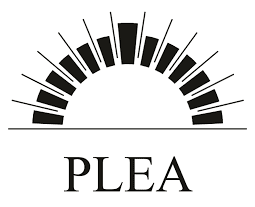As one of the leading conferences in the study area of passive and low energy architecture, the Passive and Low Energy Architecture (PLEA) Conference has presented continuously great efforts and innovative ideas from worldwide research communities and professional society in promoting the study of passive and low energy architecture. With the rapid urbanization and technological progress in the past decade, more and more research branches of PLEA emerged. Clarifying the research trend variation would benefit the research communities in identifying research gaps in this research area. This paper examines the PLEA proceedings from 2006 to 2018 with text data mining techniques in Python environment. More than three thousand lines of research paper titles have been analyzed to find out the research trend variations. The analysis reveals that main concerns of PLEA research have remained stable during the past decades. The main concerns are, indoor and outdoor thermal comfort in building level, and urban heat island effect in regional level. Natural ventilation is one of the most discussed technique in passive design strategies. Enlightening but rare mentioned keywords are ‘visual comfort’, ‘life cycle’, ‘integrated design’, ‘urban morphology’, ‘urban micro-climate’, ‘climate change’, ‘parametric study’, ‘benefit reusing’, ‘neural network’. In 2018, more advanced computation methods have been involved in PLEA research. The social house, school, dwelling, office, and residential buildings are the building types that being focused most. Research gaps lie in rural buildings that are occupied by about half of the global population and the study on accessible daylight via reasonable architectural design. This study may serve as an informative reference for research communities, industry practitioners and non-profit organizations to appreciate passive and low energy architecture research trends and developments.
Critical Analysis on Research Trend on Passive and Low Energy Architecture Study Through Text Data Mining Technique in the Period of 2006 to 2018
This entry was posted in Conference Paper. Bookmark the permalink.

